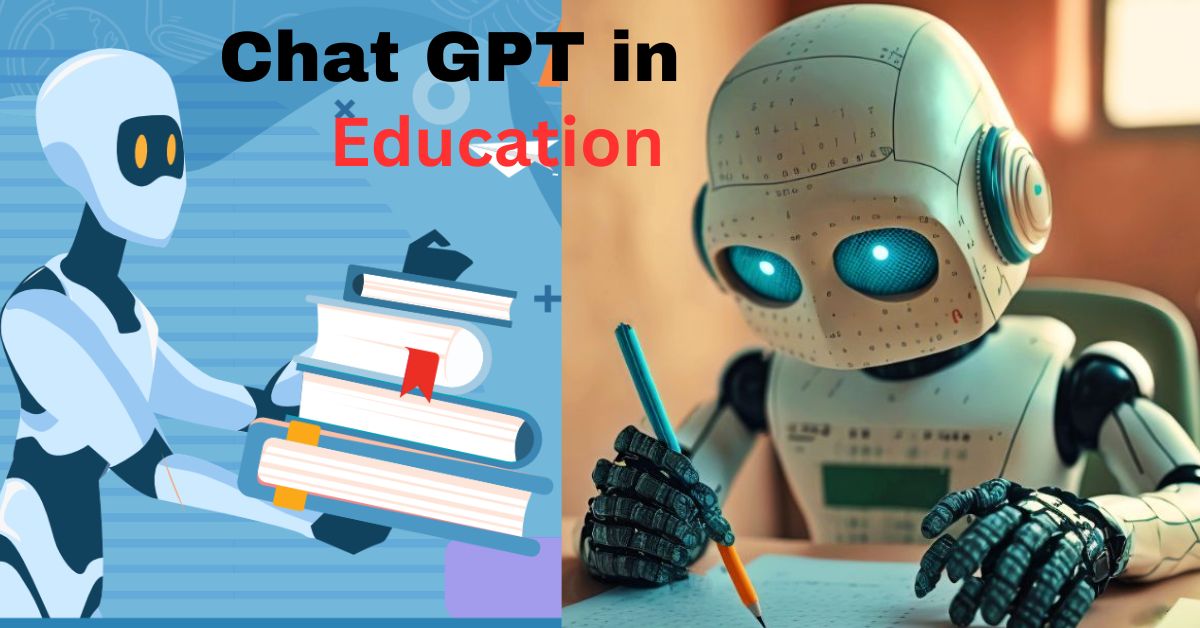Education is among the many human activities that are changing due to the advent of AI or artificially intelligent (AI). Chatbots and other conversational AI platforms, such as ChatGPT, transform how students interact with education resources, making learning more accessible, personalized, and enjoyable. The importance of ChatGPT in education and how it can enhance students’ educational experiences will be explored in the following article.
What is ChatGPT?
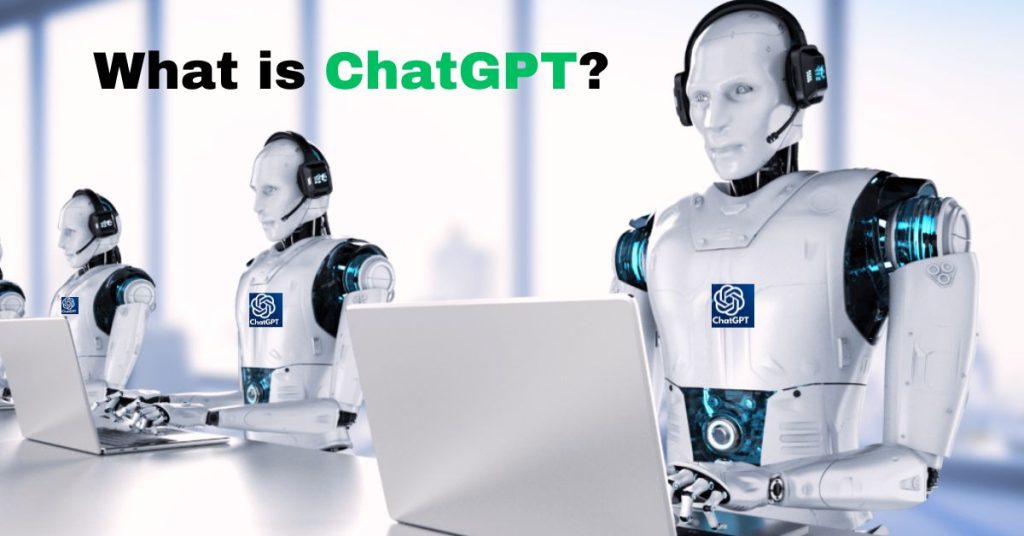
ChatGPT can be described as an AI conversational platform created by OpenAI, which utilizes a robust language model known as GPT (Generative Training Transformer) to create human-like responses to inputs from the text. Its ability to understand and answer complex questions, provide personalized responses, and even generate new text stands out as an extremely advanced chatbot.
ChatGPT is a trained system based on a vast amount of data, making it capable of analyzing the context, detecting sentiment, and producing appropriate and helpful responses. With its countless possible applications across various sectors, such as education, it’s an extremely powerful tool.
How ChatGPT is used in education
ChatGPT is an effective tool for education, providing students with a novel way to interact with resources for learning. Here are some examples of how ChatGPT is used in the field of education:
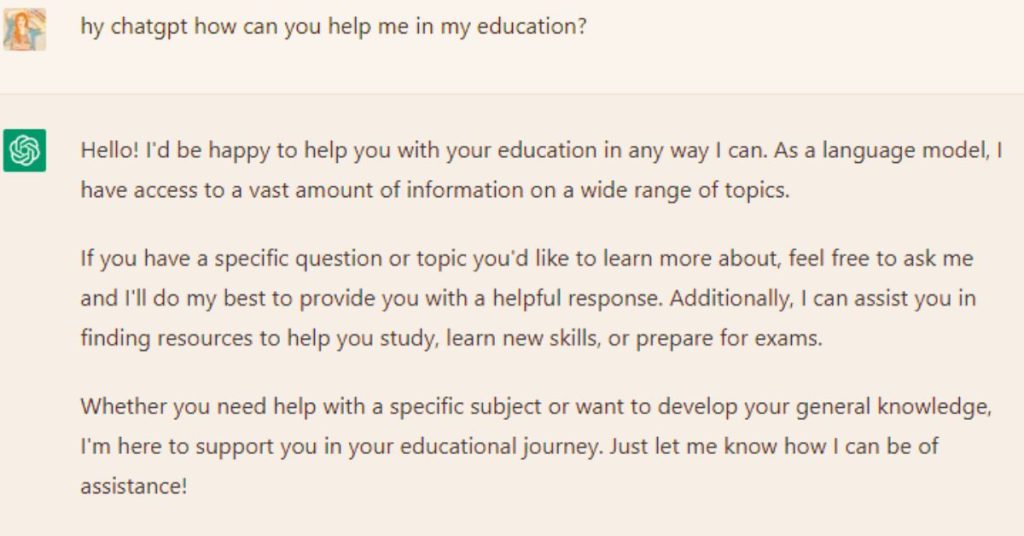
Virtual Learning Assistants ChatGPT could be used as virtual assistants to learning, providing students with 24 hours of access to support and resources. It can respond to questions, offer feedback and assist students in exercises for learning. With the help of ChatGPT, students will receive individualized help, allowing them to learn at their speed and in a manner that is compatible with their learning style.
Personalized Learning ChatGPT will analyze the student information, such as their preferences for learning performance, feedback, and more, and provide individual learning experiences. The suggestion of activities and resources that align with the student’s needs ensures that the right support is offered to help students achieve their goals.
The Language Learner: ChatGPT is an excellent instrument for learning languages since it can generate responses across multiple languages. It assists students in enhancing their language skills by giving immediate feedback on pronunciation and grammar. It also provides vocabulary.
Help with homework and assignments: ChatGPT can help students with homework assignments and other tasks. It will provide examples, answer questions, and guide students through solving problems. With the help of ChatGPT, students will receive immediate feedback, ensuring they’re on the right path and gain a greater understanding of the subject.
Digital Learning Resource: ChatGPT could be used to build digital learning resources like interactive quizzes, games, and simulations. ChatGPT can create questions, scenarios, and feedback to make learning more enjoyable and engaging.
What are the most important advantages of ChatGPT?
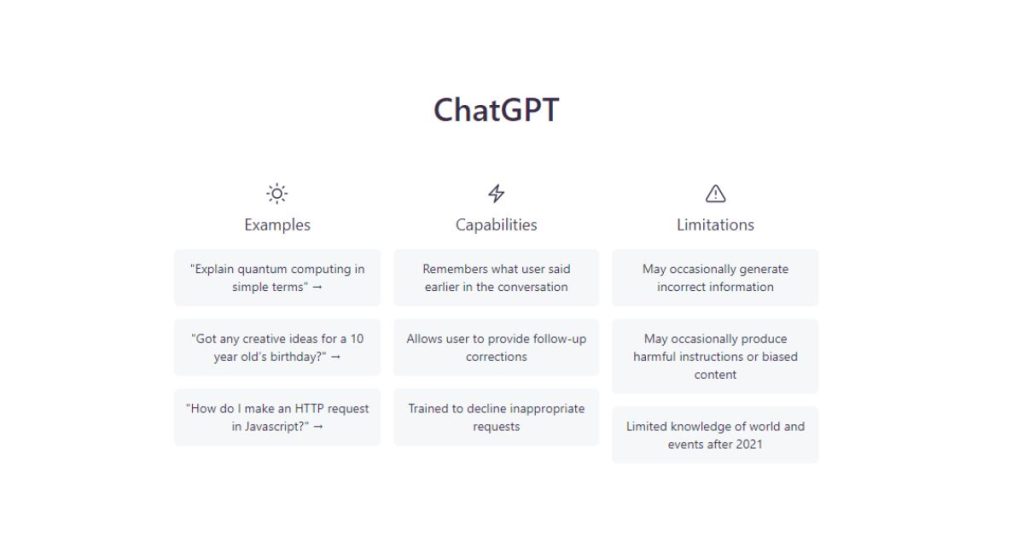
A language model ChatGPT’s primary feature ChatGPT is its capacity to produce human-like response inputs based on text. In particular, ChatGPT has the following characteristics:
- Natural Language Processing It’s able to be able to process and understand natural language inputs from users.
- Contextual Understanding: it will comprehend how the conversations are conducted and provide appropriate responses.
- Continuous Learning: It will continuously learn from the data it receives, enhancing its responses as time passes.
- The Knowledge Base is large and offers access to enormous amounts of information. It can also provide pertinent answers to a wide variety of subjects.
- Flexibility: It could be adjusted to various scenarios, for example, customer service, translation of languages, and the creation of content.
How can ChatGPT aid students’ learning?
ChatGPT can assist students in learning through a variety of methods. It can, for instance, be utilized as a language model to answer questions from students, provide explanations, and provide feedback on written assignments. It is also a great tool for making study materials like flashcards or summaries of textbooks.
In addition, ChatGPT can provide personalized recommendations based on a person’s academic progress and personal preferences, assisting them in improving their study routines and academic results.
Benefits of ChatGPT in Education
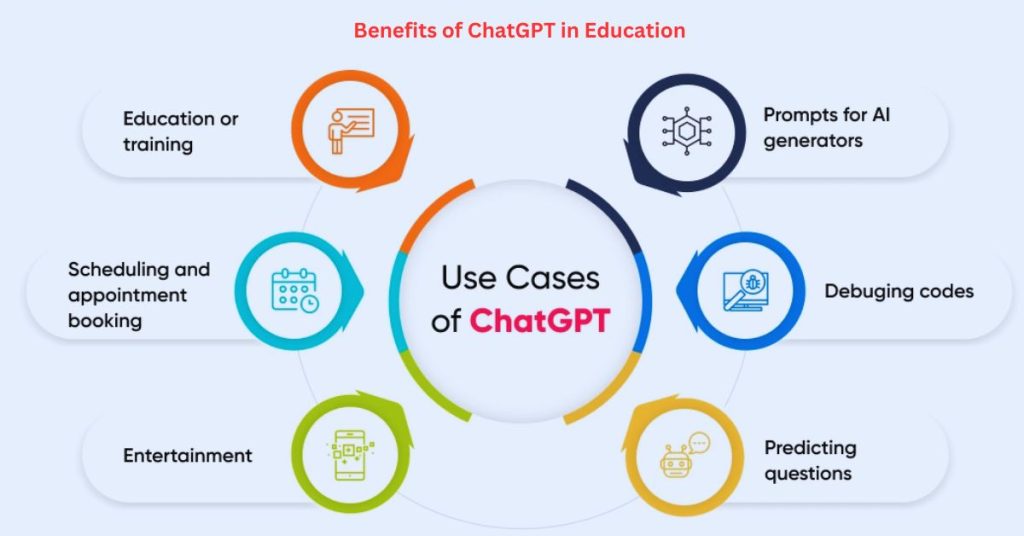
ChatGPT has many benefits for both teachers and students. It includes:
Personalized Learning ChatGPT can analyze students’ information and deliver personalized learning experiences, ensuring each student gets the assistance they require to succeed.
24/7 Support is available 24 hours a day ChatGPT is open all day, giving students access to the resources and assistance whenever needed.
Better Learning outcomes: by offering personalized support, instant feedback, and stimulating educational experiences, ChatGPT enhances learning and improves student engagement.
Accessibility: ChatGPT can be used by all learners, no matter their geographical location, abilities, or background. Since it is available on any internet-connected device, it can be a powerful instrument for remote and distance learning.
Affordable: ChatGPT can be a low-cost tool since it can offer individualized support and feedback at an incredibly large scale, thus reducing the requirement for support and resource personnel.
Challenges of Chat GPT in Education

Chat GPT can also pose issues for educators like:
Quality and accuracy Chat GPT isn’t flawless and can produce texts that are inaccurate, insignificant, or unsuitable. Chat GPT could also need more expertise or knowledge in certain topics or subjects. Thus chat GPT requires expert supervision and evaluation to ensure quality and accuracy.
Maintaining safety and ethics Chat GPT could produce offensive, harmful, or misleading text. Chat GPT can also infringe the intellectual property or privacy rights when it uses personal or copyrighted information. Thus chat GPT must adhere to security and ethical guidelines to safeguard the interests of users and others.
Addressing diversity and bias: Chat GPT may reflect or amplify stereotypes and biases due to its algorithms or training data. Chat GPT can additionally exclude or marginalize certain people or groups based on their culture, language, or ethnicity. Thus chat GPT must have a diverse and inclusive approach to respect and reflect all users and other stakeholders.
Conclusion
ChatGPT is well-suited for the challenges of the educational sector due to its sophisticated language model and capability to comprehend the context. As AI technology continues to improve, ChatGPT, as well as other chat-based AI technologies, will have a larger role in education, changing how people learn and how we interact with educational tools.
But, it’s important to keep in mind that chat GPT should be able to guarantee quality and accuracy, maintain the highest standards of ethics and security, and should be utilized to enhance and complement the role of educators rather than replace it. If we can overcome these issues in the field, chat GPT could become an effective tool in education in the 21st century.
FAQs
What are the students’ experiences using ChatGPT?
Students use ChatGPT to get fast and precise answers to their queries, get feedback on their writing assignments, design study materials, and receive individualized advice on improving their learning results.
What exactly does ChatGPT mean in the context of education?
ChatGPT could change education by providing customized and interactive learning experiences that help students be more efficient and effective in their learning and provide teachers with invaluable feedback to improve their teaching techniques.
What can chatbots be used for in the field of education?
Chatbots can be utilized in schools to assist students with questions, give feedback on writing assignments, create study guides, provide personalized advice, and offer teachers insight to enhance their teaching strategies.
What are the advantages of ChatGPT?
The advantages of ChatGPT are its capacity to create human-like responses for text-based input, automate certain tasks, improve customer service and learning, and provide useful insights for educators and businesses.
Which are the positive outcomes of ChatGPT?
The positive effects of ChatGPT are enhanced effectiveness and efficiency, better customer experiences, more personalized and interactive learning experiences, and valuable analytics and insights for educators and businesses.
How can ChatGPT benefit from AI for its replies?
ChatGPT uses AI to respond, using Natural Language Processing and Machine Learning algorithms to study and understand the context of input from users and generate responses that resemble human ones and constantly improve its performance by learning massive quantities of data.
What is ChatGPT, the AI chatbot subject of all discussion?
ChatGPT can be described as an artificial intelligence-powered chatbot built in GPT-3.5. It is a chatbot built on GPT-3.5 architecture, developed by OpenAI and renowned for its capability to provide human-like responses when input is text-based and useful information and insights for educators and businesses.
Does ChatGPT be able to replace Google?
It’s not true; ChatGPT cannot replace Google because they have different functions. ChatGPT offers human-like responses to input via text, while Google offers a full search engine that ranks and indexes websites based on relevancy and popularity.
What engine uses ChatGPT? ChatGPT makes use of?
ChatGPT utilizes the GPT-3.5 architecture, an upgraded version of GPT-3.5, and a more advanced version of the GPT (Generative pre-trained Transformer) series of neural language models created by OpenAI to produce human-like responses when input is text-based.
What is ChatGPT distinct from Google search?
ChatGPT and Google search differ because ChatGPT utilizes Natural Language Processing and Machine Learning algorithms to give human-like responses to text-based input. Google search gives search results for relevant websites based on keywords and other search criteria.
What makes ChatGPT superior to Google?
ChatGPT is sometimes better than Google because they have different functions. But, ChatGPT may provide more customized or interactive answers to inputs using text, and Google offers a broad and effective search engine that allows you to locate details on the web.
What’s the future of chatbots?
Future chatbots are set to see a rise in use and advancement thanks to higher-end AI capabilities, enhanced natural language processing, and more interactive and personalized user experiences across diverse fields.
